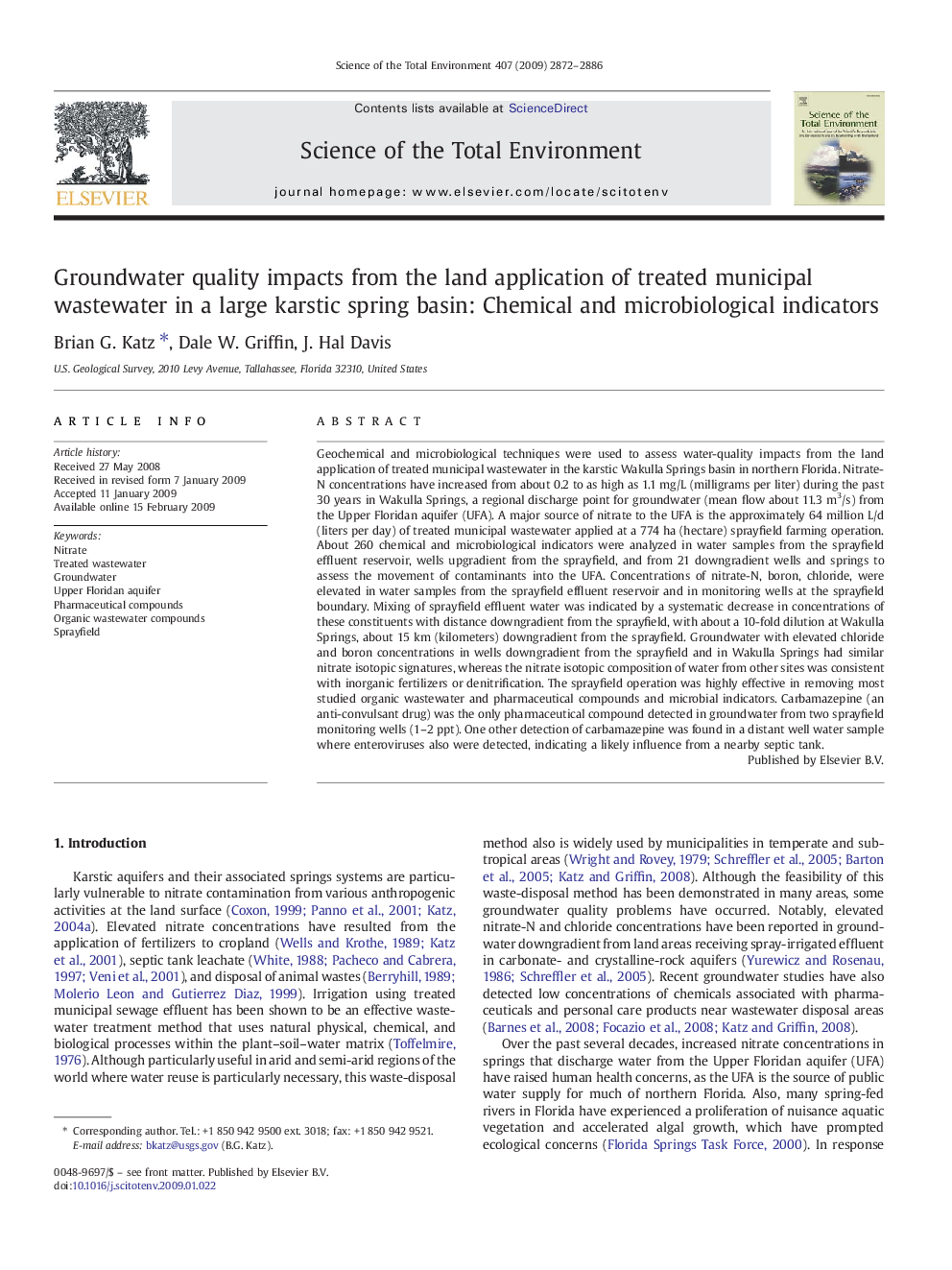| کد مقاله | کد نشریه | سال انتشار | مقاله انگلیسی | نسخه تمام متن |
|---|---|---|---|---|
| 4431975 | 1619902 | 2009 | 15 صفحه PDF | دانلود رایگان |

Geochemical and microbiological techniques were used to assess water-quality impacts from the land application of treated municipal wastewater in the karstic Wakulla Springs basin in northern Florida. Nitrate-N concentrations have increased from about 0.2 to as high as 1.1 mg/L (milligrams per liter) during the past 30 years in Wakulla Springs, a regional discharge point for groundwater (mean flow about 11.3 m3/s) from the Upper Floridan aquifer (UFA). A major source of nitrate to the UFA is the approximately 64 million L/d (liters per day) of treated municipal wastewater applied at a 774 ha (hectare) sprayfield farming operation. About 260 chemical and microbiological indicators were analyzed in water samples from the sprayfield effluent reservoir, wells upgradient from the sprayfield, and from 21 downgradient wells and springs to assess the movement of contaminants into the UFA. Concentrations of nitrate-N, boron, chloride, were elevated in water samples from the sprayfield effluent reservoir and in monitoring wells at the sprayfield boundary. Mixing of sprayfield effluent water was indicated by a systematic decrease in concentrations of these constituents with distance downgradient from the sprayfield, with about a 10-fold dilution at Wakulla Springs, about 15 km (kilometers) downgradient from the sprayfield. Groundwater with elevated chloride and boron concentrations in wells downgradient from the sprayfield and in Wakulla Springs had similar nitrate isotopic signatures, whereas the nitrate isotopic composition of water from other sites was consistent with inorganic fertilizers or denitrification. The sprayfield operation was highly effective in removing most studied organic wastewater and pharmaceutical compounds and microbial indicators. Carbamazepine (an anti-convulsant drug) was the only pharmaceutical compound detected in groundwater from two sprayfield monitoring wells (1–2 ppt). One other detection of carbamazepine was found in a distant well water sample where enteroviruses also were detected, indicating a likely influence from a nearby septic tank.
Journal: Science of The Total Environment - Volume 407, Issue 8, 1 April 2009, Pages 2872–2886